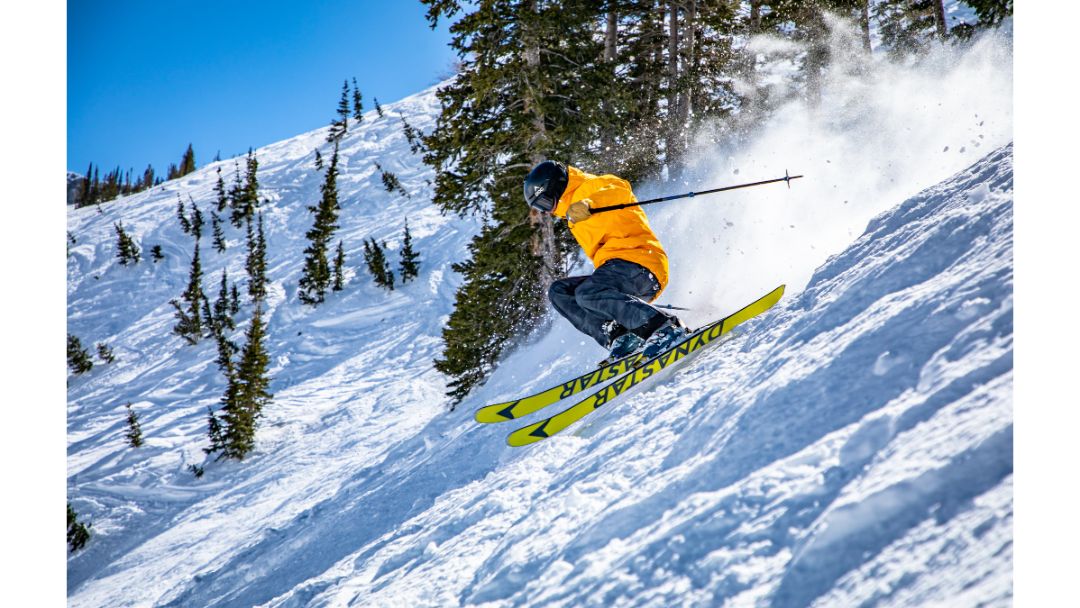Overview
When Laurent Boix-Vives acquired the distressed fledgling brand Dynastar, he already had Rossignol in his portfolio. Thus was born a sibling rivalry that persists to this day, with the elder trying to establish an untouchable record and the younger always looking for a way to upstage the first-born.
While we can’t say for certain that the Cham series Dynastar launched in 2013 was a conscious effort to outperform Rossi’s successful S7 model, it’s a plausible assertion. Dynastar’s powder skis had always been beefier than whatever Rossi had in play; consider the Jeremy Nobis signature Dynastars versus Rossignol’s Bandit XXX, for example. Heavily rockered, the S7 skied shorter than it measured and without any metal in it was kind of a noodle.
Retaining the idea of the shorter effective platform, Dynastar gave the Cham a stiff front rocker that was segregated from the main structure of the ski by moving the widest contact point well down the ski. Then they tucked the last several cm’s of tail in so they also wouldn’t interfere with turn radius. Finally, they turned up the torsional rigidity so the ski could handle higher speeds. The result was a whole line of S7’s on steroids, christened the Chamonix series in honor of the resort just down the road from Sallanches, where Dynastars are still made.
With an appetite for hugging the fall line, the Cham 97 and Cham 107 developed a strong – literally and figuratively – following in their debut season, but they came across as a bit too aggressive for the weekend warrior. Overlooked in the excitement over the powerful Cham series headliners were their metal-free doppelgangers, the High Mountain versions meant for true alpinists. The Cham High Mountain 107 in particular proved a better choice for those who ski less than 50 days a season and mean to use it primarily as a powder ski. By “better,” we mean you won’t have to work as hard, which is the main rationale for skis this wide in the first place.
In 2015, Dynastar began the transition to a metal-free Cham collection when it modified the Cham 117 to make this monstrous ski more maneuverable. The new design, dubbed Cham 2.0, lessened the severity of the front rocker and smoothed out the transition zones in the 5-point sidecut. The following year the entire Cham line was given the 2.0 treatment, so all the Chams were mellower and easier to ski for those who don’t attack straight down the fall line.
Four years ago, Dynastar launched the Legend X series, an amalgam of a Cham-like chassis with a unique sidewall construction called Powerdrive that first appeared on Dynastar’s Speed Zone and Speed race series the year before. Situated in a section of the forebody where vibration amplitude peaks, Powerdrive consisted of a 3-piece sidewall that both dampened shock and disconnected the core’s components from the fixed outer sidewall. This allowed the separate laminates in the structure to shear relative to one another, so the Legends stayed in better contact with the snow. The combination of Powerdrive and the Chamesque shape made for a relatively soft-flexing, easy-steering set-up that performed at its peak in soft snow.
2021 was a big year for Dynastar, the first since 2012 without a Cham/Legend as its headliner. As a measure of how long a span that’s been, note that when the Chams debuted, their 5-point sidecut was relatively unusual; no other major brand provided width measurements at five points. Now the reverse it true: there’s hardly an all-mountain ski made that doesn’t incorporate at least some taper at tip and tail.
Stepping into these big shoes two years ago was a focused, 3-family clan: M-Pro, M-Free and M-Tour. M-Pro spanned 4 models in waist widths from 84mm to 105mm, all built with a hybrid poplar/PU core reinforced with a tapered blade of Titanal on top. Their directional sidecuts and flat tails stand in sharp contrast to the twin-tipped, deeply tapered shape of the M-Free 108 and M-Free 118, which also use a poplar/PU core but unembellished by metal laminates that would weigh them down. Dynastar extended the M-Free family last year by creating the M-Free 99, essentially the same ski as the M-Free 108, only slimmer. The two M-Tour models are intended for backcountry, so they borrow the flat-tail shape of their M-Pro bros.
As was the case with the Legend series, the women’s versions of M-Pro are identical to the men’s. Note that there is no women’s M-Pro 105 (now the M-Pro 108 Ti F-Team), nor are there women-specific versions of M-Free.
The 2023 Season
Dynastar kept the core of its M-Line collection intact this year, while extending the twin-tip M-Free clan down to a 90mm waist and a $499 street price. At the opposite end of the M-Pro contingent, the new M-Pro 108 Ti F-Team takes over the flagship duties in place of the retired M-Pro Rider. More than just a name change, the new M-Pro uses a hybrid core like the rest of the M-line, along with Ti Rocket Frame, to make a more maneuverable ski that comes in three sizes instead of one. We regret not having had the opportunity to test a model that occupies a position in the Dynastar line that has usually been held by a star product. We’ll do all we can to remedy the situation in the season ahead.

